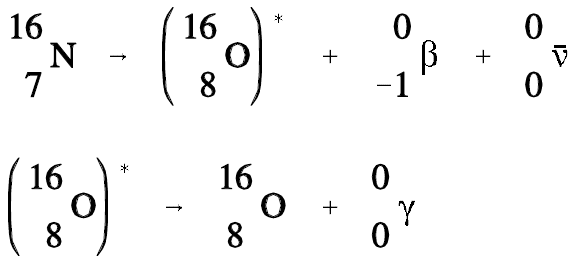


 الفيزياء الكلاسيكية
الفيزياء الكلاسيكية
 الكهربائية والمغناطيسية
الكهربائية والمغناطيسية
 علم البصريات
علم البصريات
 الفيزياء الحديثة
الفيزياء الحديثة
 النظرية النسبية
النظرية النسبية
 الفيزياء النووية
الفيزياء النووية
 فيزياء الحالة الصلبة
فيزياء الحالة الصلبة
 الليزر
الليزر
 علم الفلك
علم الفلك
 المجموعة الشمسية
المجموعة الشمسية
 الطاقة البديلة
الطاقة البديلة
 الفيزياء والعلوم الأخرى
الفيزياء والعلوم الأخرى
 مواضيع عامة في الفيزياء
مواضيع عامة في الفيزياء|
Read More
Date: 29-3-2017
Date: 26-3-2017
Date: 17-4-2017
|
Isomers and Isomeric Transition
Isomeric transition commonly occurs immediately after particle emission; however, the nucleus may remain in an excited state for a measurable period of time before dropping to the ground state at its own characteristic rate. A nucleus that remains in such an excited state is known as a nuclear isomer because it differs in energy and behavior from other nuclei with the same atomic number and mass number. The decay of an excited nuclear isomer to a lower energy level is called an isomeric transition. It is also possible for the excited isomer to decay by some alternate means, for example, by beta emission.
An example of gamma emission accompanying particle emission is illustrated by the decay of nitrogen-16 below.




|
|
|
|
تفوقت في الاختبار على الجميع.. فاكهة "خارقة" في عالم التغذية
|
|
|
|
|
|
|
أمين عام أوبك: النفط الخام والغاز الطبيعي "هبة من الله"
|
|
|
|
|
|
|
قسم شؤون المعارف ينظم دورة عن آليات عمل الفهارس الفنية للموسوعات والكتب لملاكاته
|
|
|